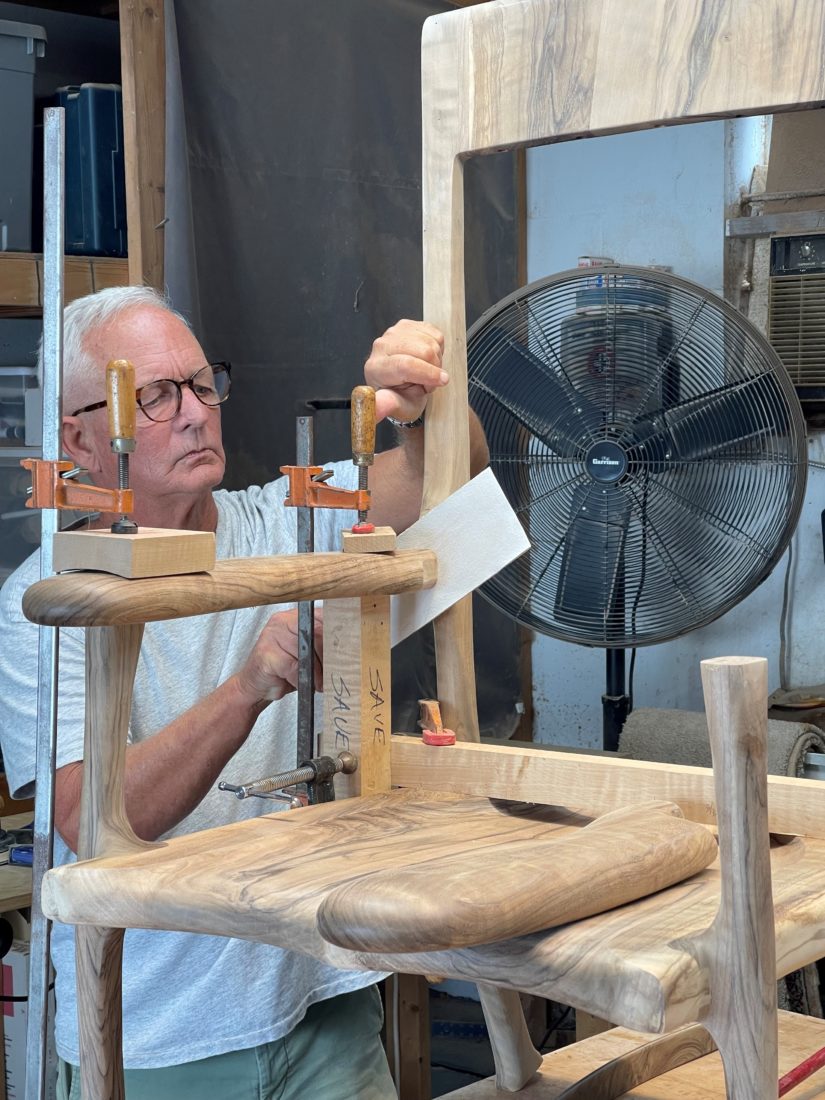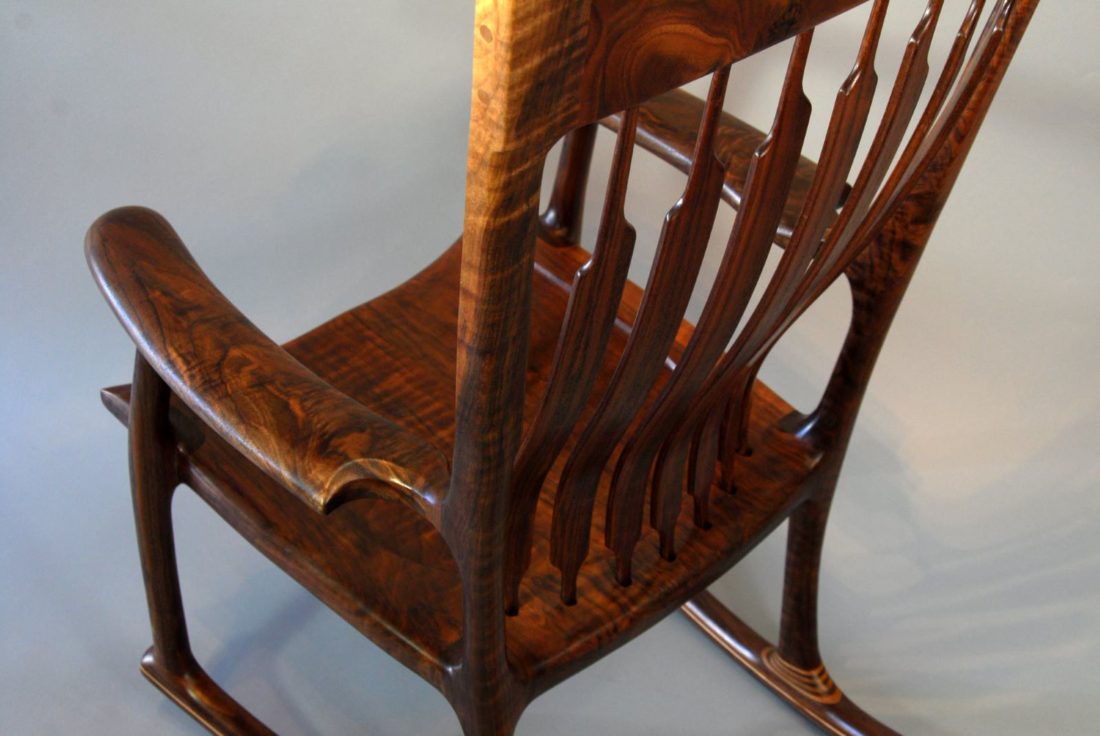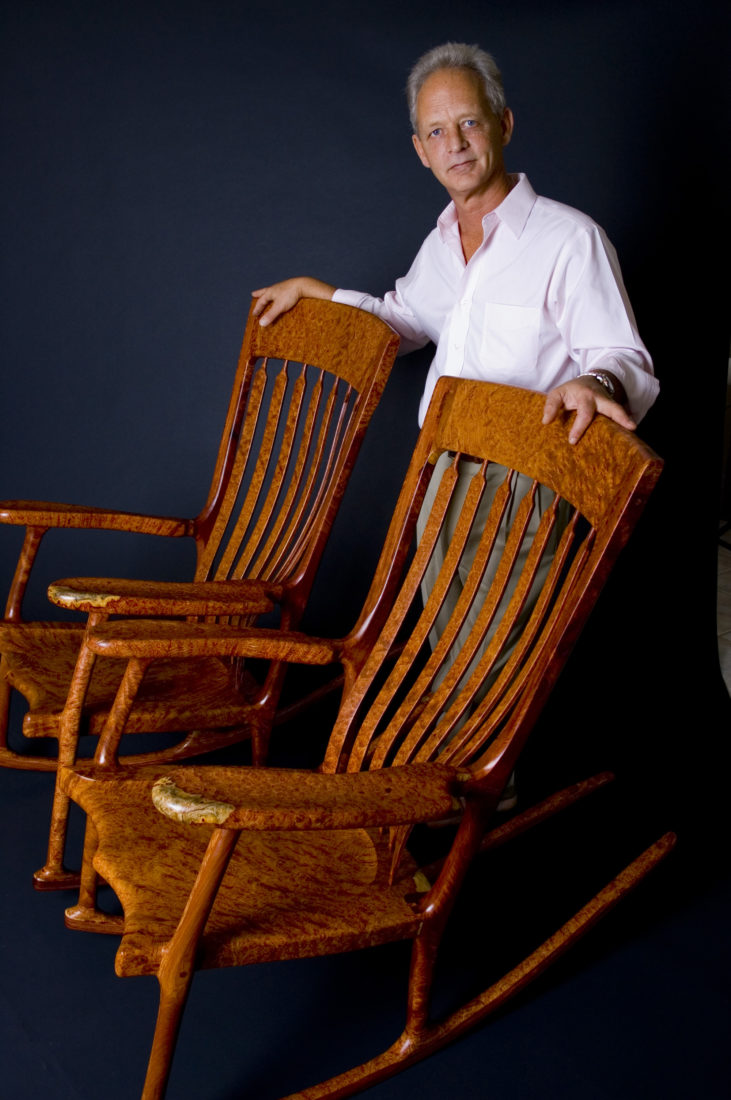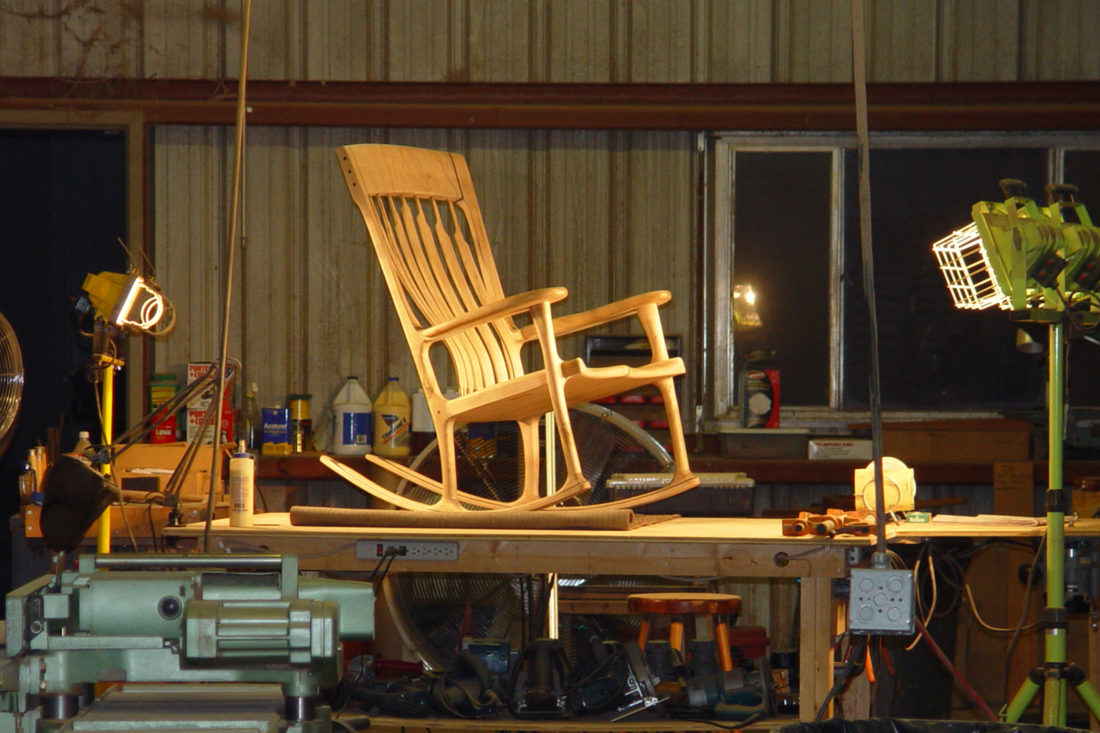“There’s something mellow and contemplative and thoughtful about sitting in a rocking chair,” says Parker Converse. He would know. After working as a businessman, then a publisher, and then a sea captain, Converse has dedicated the last two decades to building custom rocking chairs in his workshop in Sarasota, Florida. Here, he shares the secrets that take a rocker from good to great (and no, he doesn’t think much of the creaky ones out front at Cracker Barrel).

Get the Right Fit
“The most important thing is that the chair fits your body,” he says. A quick lesson in proper rocker posture: Your head should easily find the headrest, the chair should follow the curves of your back, your feet should lay flat on the ground, and your fingers should curl comfortably around the ends of the armrests. Unfortunately, most chairs don’t hit all those spots for everyone. “If you are very short or very tall, it’s very difficult to find a seat where your back and upper legs are supported while your feet are on the ground,” Converse says. “When someone walks in my door, I can tell what chair will work for them.”
Find Your Purpose
The chair should be made to reflect which relaxing activity you’ll undertake while sitting in it (as Converse points out, “I can’t imagine anyone yelling from a rocking chair”). He makes armless chairs for playing guitar and quilting, chairs with convex arms for reading, and chairs with concave arms for plain old sitting. “When you sit down, you should feel like that chair was designed for your arms.”

Invest in the Details
“A rocking chair should be built for generations,” Converse says. “Nobody cares about a relative’s Ethan Allen couch—but everybody wants that rocking chair that its owner sat in and loved.” To that end, he spends two weeks on each chair he builds, attending to the details, like adding beeswax to the spindles to avoid creaking, and laminating ten layers of wood to make the customized curves of the back braces and the rockers themselves.
Make It Beautiful
“I have some customers wanting chairs that are real eye candy,” Converse reports; he’s added leather accents, and made entire chairs out of Amboyna burl, the rare and expensive wood that appears in the veneers of some Bentleys and Ferraris. “Other people don’t want flashy, they want something that fits like an old shoe.” In either case, the final product should be what he calls “functional art.” He employs all types of wood, in all combinations—English walnut, ambrosia maple, and cherry are some of his go-tos—and sands the surfaces to smooth perfection.

“Before I made my first chair, I just looked at the pile of flat boards I’d bought and couldn’t imagine how it could come together to make the curves of a rocking chair,” Converse remembers. Twenty years later, he delights in crafting a chair that fits the body, and the personality, of its prospective inhabitant. “I’m like a tailor. No two chairs I’ve ever made are the same.” From curving back support to convex armrests to the sweeping arc of the rocker, one thing is certain: The art of porch sitting can be much improved by finding the right seat for the sitter.








